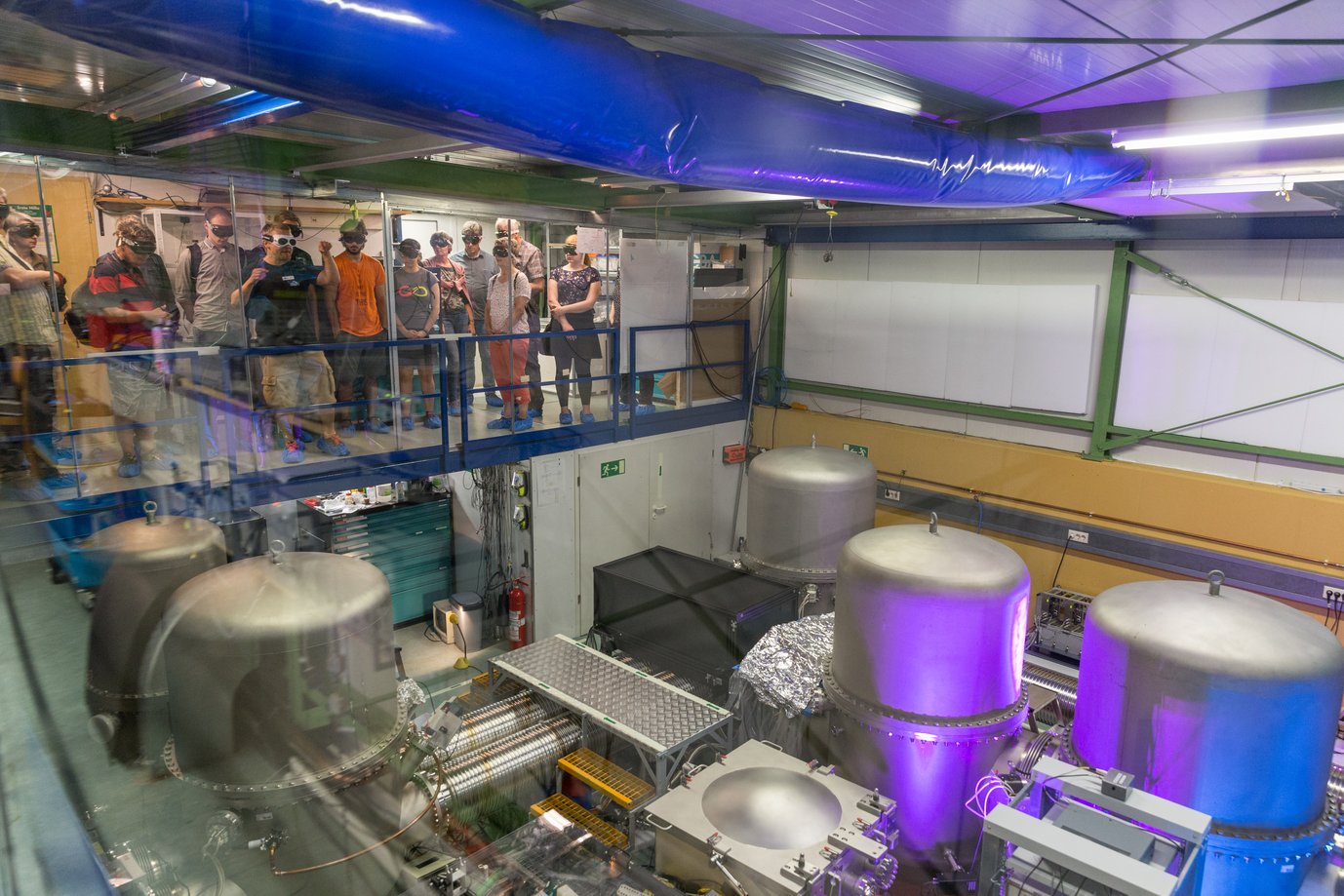Open Day at GEO600 on 16th June 2019
Visit the gravitational-wave detector near Sarstedt
On Sunday, 16th of June 2019, the Max Planck Institute for Gravitational Physics and the Institute for Gravitational Physics of Leibniz Universität Hannover are inviting people to visit the Anglo-German gravitational wave detector GEO600 near Sarstedt. Between 11 a.m. and 3 p.m., researchers at the detector site inform the public about the new era of gravitational-wave astronomy and the crucial contributions of GEO600, a think tank of international research.
What? Open Day at the gravitational-wave detector GEO600 with tours, exhibits, and short presentations. All interested are invited!
When? Sunday, 16th June 2019 between 11 a.m. and 3 p.m.
Where? Ruthe near Sarstedt, please come by bike or car as described on the right.
No prior appointment required.
A new era of astronomy
With the first direct measurement of gravitational waves in September 2015, for the first time a new window offered a glimpse of the invisible “dark” side of the universe. Since then, gravitational wave signals from nine further black hole mergers and a colliding neutron star pair have been observed; since April 2019, further signal candidates have been discovered almost weekly – a new era of astronomy has begun!
GEO600 is playing an important role here, developing and testing new technologies for the detection of gravitational waves. These technologies are very important for the sensitivity of the advanced LIGO detectors in the US, which measured the gravitational waves. The first gravitational-wave detection was awarded the Nobel Prize in Physics in 2017.
Cutting-edge research at first hand

The Open Day on 16th June 2019, which will take place between 11 a.m. and 3 p.m., will give visitors first-hand information on the basic research and day-to-day work of the gravitational wave detector GEO600.
Optional guided tours of the detector premises will provide an insight into the heart of the highly sensitive measurement facility (visitors must be at least 16 years of age), while the event itself will be rounded off with exhibits and the chance to attend brief talks and converse with scientists.
Please note that the central building of GEO600 is a laser protection area and legal restrictions require visitors to be at least 16 years of age. All other stations on the GEO600 site have no age restrictions.
Getting there by bike or public transport
The GEO600 premises are situated to the south of the Leine River and can be ideally reached by taking a slight detour from the “Grüner Ring” cycling route. A visit to GEO600 is best combined with a bike ride, as you can cycle directly to the central building of the GEO600. A bike map has been provided on the right column of this page for orientation purposes.
By public transport you can reach the train station in Sarstedt (from Hannover with the S4, the erixx and the Metronom). From there you can take a taxi, continue by bike to GEO600 or go for a walk (approx. 4 km).
Travelling from Hannover by car and where to park
By car: Take the B6 (Messeschnellweg) southbound and take a right at “Sarstedt/Heisede”. Turn right in the direction of Heisede, then left at “Schulenburg/Ruthe”. In Ruthe, turn right. After the Leine crossing, turn right at the EXPO sign (or at the white sign for “Universität Hannover/Versuchsgelände” or the green sign for “Schäferberg”).
Please do not drive directly to the central building of GEO600. When travelling by car, please use the car park at the Farm for Education and Research in Ruthe. From there, it is a short walk to the central building of the gravitational wave observatory along the 600-metre laser arm of GEO600. You will find information boards along the path.
